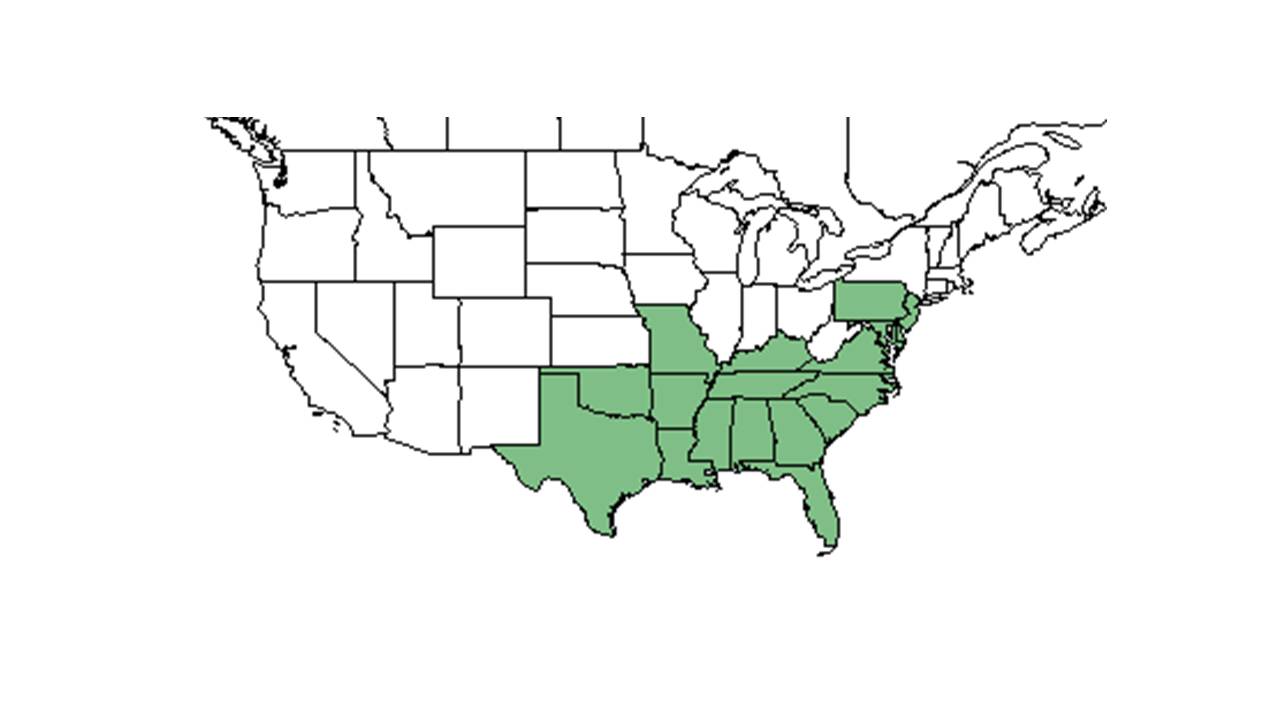Difference between revisions of "Cyperus croceus"
Ruthstetler (talk | contribs) |
Ruthstetler (talk | contribs) |
||
| Line 29: | Line 29: | ||
It requires a semi-tropical climate and can dwell in temperatures from -1 to 37 degrees Celsius.It can be found in mixed-pine forests.<ref name="Archer et al 2007">Archer, J. K., D. L. Miller, et al. (2007). "Changes in understory vegetation and soil characteristics following silvicultural activities in a southeastern mixed pine forest." Journal of the Torrey Botanical Society 134: 489-504.</ref> | It requires a semi-tropical climate and can dwell in temperatures from -1 to 37 degrees Celsius.It can be found in mixed-pine forests.<ref name="Archer et al 2007">Archer, J. K., D. L. Miller, et al. (2007). "Changes in understory vegetation and soil characteristics following silvicultural activities in a southeastern mixed pine forest." Journal of the Torrey Botanical Society 134: 489-504.</ref> | ||
===Phenology=== <!--Timing off flowering, fruiting, seed dispersal, and environmental triggers. Cite PanFlora website if appropriate: http://www.gilnelson.com/PanFlora/ --> | ===Phenology=== <!--Timing off flowering, fruiting, seed dispersal, and environmental triggers. Cite PanFlora website if appropriate: http://www.gilnelson.com/PanFlora/ --> | ||
| + | ''C. croceus'' has been observed flowering and fruiting in May through November (FSU Herbarium). | ||
| + | |||
===Seed dispersal=== | ===Seed dispersal=== | ||
===Seed bank and germination=== | ===Seed bank and germination=== | ||
Revision as of 15:47, 9 July 2015
| Cyperus croceus | |
|---|---|

| |
| Scientific classification | |
| Kingdom: | Plantae |
| Division: | Magnoliophyta - Flowering plants |
| Class: | Liliopsida – Monocotyledons |
| Order: | Cyperales |
| Family: | Cyperaceae |
| Genus: | Cyperus |
| Species: | C. croceus |
| Binomial name | |
| Cyperus croceus Vahl | |

| |
| Natural range of Cyperus croceus from USDA NRCS Plants Database. | |
Contents
Description
Common Name: Baldwin's flatsedge
This species is a perennial graminoid.
Distribution
Ecology
It is one of the first plants to appear after clear-cutting; it can appear within three years.[1]
Habitat
It requires a semi-tropical climate and can dwell in temperatures from -1 to 37 degrees Celsius.It can be found in mixed-pine forests.[1]
Phenology
C. croceus has been observed flowering and fruiting in May through November (FSU Herbarium).
Seed dispersal
Seed bank and germination
Fire ecology
It is fire tolerant (FSU Herbarium).
Pollination
Use by animals
Diseases and parasites
Conservation and Management
Cultivation and restoration
Photo Gallery
References and notes
Florida State University Robert K. Godfrey Herbarium database. URL: http://herbarium.bio.fsu.edu. Last accessed: June 2014.
Collectors: Loran C. Anderson, Richard Carter, Angus Gholson, Robert K. Godfrey, N. C. Henderson, M. Kral, R. Kral, H. Kurz, S. W. Leonard, J. B. McFarlin, Richard S. Mitchell, P. L. Redfearn, Paul O. Schallert, H. L. Blomquist, William R. Stimson, R. A. Norris, K. E. Blum, Ed Keppner, and Lisa Keppner.
States and Counties: Florida: Calhoun, Columbia, Dade, Dixie, Escambia, Franklin, Hernando, Highlands, Indian River, Jackson, Jefferson, Lamar, Leon, Liberty, Martin, Okaloosa, Orange, Palm Beach, Pasco, Santa Rosa, Seminole, St. Lucie, Sumter, Wakulla, and Walton. Georgia: Clinch.